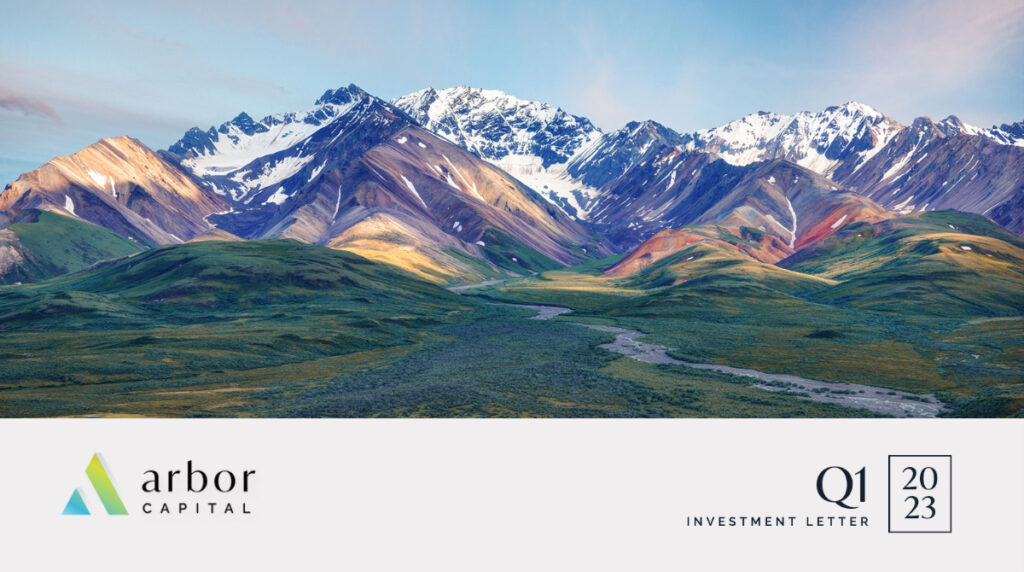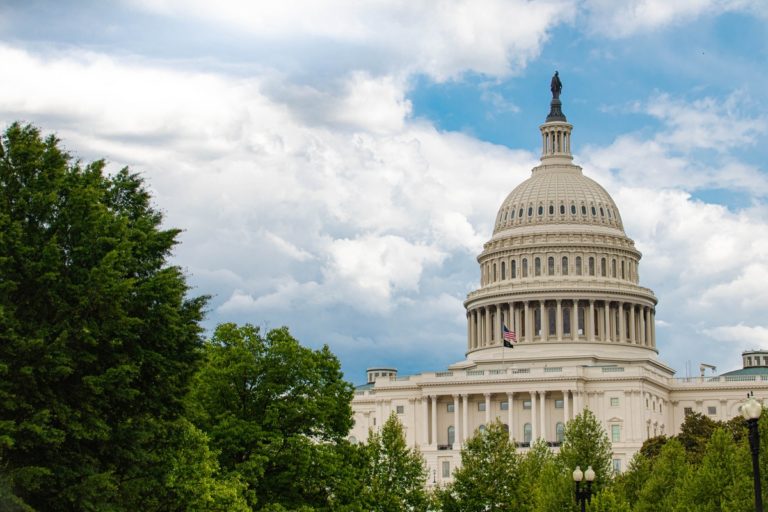Something broke. Four banks have disappeared in the past few months. Silicon Valley Bank, Silvergate Bank, Signature Bank of NY, and First Republic Bank. Circumstances surrounding the downfall of each bank may differ. What they have in common is all four banks failed during a time when the Federal Reserve raised interest rates at an incredibly rapid pace over the past 14 months. As with the financial crisis back in 2007 and 2008, the Federal Reserve and other government regulators again appear to be making up the rules as they go along. Most countries have a few national banks. The U.S. is unique with its vast number of regional banks. The question is will the largest US banks continue to grow while regional banks go out of business through the choice of depositors and/or the decisions of US regulators?
Outside the U.S., the war in Ukraine continues. Europe dodged energy issues with a warm winter yet inflation is worse there than in the US. This impacts not only consumer spending but also decisions by manufacturing firms on where the low-cost location is to manufacture products. It is not Europe. China is currently conducting military activity around Taiwan, and seeking to lessen reliance on the US dollar when conducting business with Russia and the Middle East. We should expect China and other countries to act more in a collective self-interest against the United States and Europe with ramifications for inflation and the dollar.
Inflation rates are improving with April CPI coming in at 4.9% growth yoy and PPI at 2.4%. The Fed continues to shoot for 2.0% growth as its inflation target. But everyday brand pricing looks much higher. Retailers such as Costco saw inflation in the mid-single digits two quarters ago and 3-4% this past quarter. Coke, Pepsi, McDonald’s, Sherwin Williams. have all their revenue growth coming from pricing which in many cases is high-single-digit growth to low-double-digit growth. Mortgage rates have remained relatively steady at 6.7% in recent weeks. The monthly supply of new homes is 7.6 months through April compared to 8.5 months this time last year. How higher mortgage rates impact new/used home purchases and pricing will be seen in the busy spring/summer season.
While all of the above is occurring, the S&P is up 12% YTD and the Nasdaq is up 33%. Gains are narrow in large-cap tech. Apple is up 39% YTD, Microsoft 36%, Amazon 48%, Nvidia 164%, Alphabet 38%, Tesla 91%, and Meta (Facebook) 120%. These companies have valuations that do not come close to justifying their earnings growth potential. Most stocks in areas like financials, energy, healthcare, or consumer have a performance that is flat to down year-to-date. Even in crypto, bitcoin and other token have seen dramatic run-ups year-to-date.
As banks face continued problems, inflation persists and investors take a “risk-on” approach with a narrow group of investments, the Federal Reserve continues to raise interest rates. While the Fed sounds determined to break inflation, increase unemployment, depress the equity markets, and protect banks, none of it yet appears to be working. Not so obvious to the public, and in response to the banking scare, the Fed has opened up its “discount” window allowing banks to access funds to shore up their balance sheets and prevent runs by depositors. Consequently, the quantitative tightening and shrinking of the Federal Reserve balance sheet has stopped. The balance sheet has expanded again.
We have noted before that the markets are in a correction phase. This started in late 2021 and could take another few years to play out. The US economy has not seen a true recession since the Great Financial Crisis and this one could occur while the Federal Reserve keeps interest rates high to eliminate inflation. Keeping interest rates high could make for an ugly credit cycle where consumer, commercial, and corporate lending see large losses coupled with curtailed lending activity.
As a fiduciary, Arbor needs to make sure your money provides for the things you need. The reality is there are changes in the economy that may not matter to you until your specific circumstances change. Discussion with your investment advisor may be a prudent course of action, especially if a financial plan needs to be adjusted during continued turbulent times.
We would like to highlight some recent news and its impact on our strategies, as well as thoughts on what could lie ahead.
Arbor Capital Management: Wealth Strategies
Fixed Income Market
Most fixed-income markets rebounded in price during the first quarter of 2023. Federal Reserve rate hikes were already priced in and though recessionary fears loom in the discussion of commentators there hasn’t been much in terms of concrete evidence to support a recessionary outlook in the short term. Everything was coming up roses until the turmoil and headlines surrounding the first three banks that went into FDIC receivership in March. In general, most fixed-income sectors did just fine through this but the price of treasuries went up significantly in a run to safe-haven assets. Treasuries in March were far and away the best fixed-income sector and left all else behind.
Both of our flagship fixed-income strategies (Princeps and Princeps Tax-Free) performed as expected both in the first two months of the year and during the run for the hills safe-haven outperformance in March. Money market rates are above 4%. We are still seeing rates on CDs and both taxable and tax-free municipal bonds at rates higher than we have seen in a long time; however, not quite at the levels, we saw last October.
Equities
Within Global Brands – Value, energy, and consumer staples’ names underperformed this quarter. Industrial companies held up well. During the quarter, we added to our exposure to energy with Occidental Petroleum (US oil production) and EQT (US natural gas production). Our exposure to banks is limited to JPMorgan and USBank, with just USBank being a significant laggard. Both banks are very large and traditionally conservative lenders focused on prime customers. When looking to invest new funds, most stocks in Global Brands – Value is reasonably priced and pay generous dividends.
Within Global Brands – Growth, mega-cap technology has led the way along with a couple of more speculative companies. Laggards have been mainly in healthcare along with a couple of different speculative names. During the quarter, we exited two small-mid cap positions, one in consumer and one in financial services, both of which had high valuations. We have added one small-cap consumer company and one large-cap telecom company. Valuations are still expensive for many companies in our Global Brands – Growth portfolio. While the businesses may be performing OK, growth stocks trading at 30-40 times forward earnings are priced for perfection if you want to invest new money into the equity markets.
Both the value and growth books continue to invest in long-term themes including growth in the global middle class, the bifurcation of the oil and gas markets, electric vehicle production, and cloud-based computing. We do not see these themes changing significantly through economic cycles and prefer to hold equities for the long term.
Real Estate Investment Trusts (REITs)
After a strong January rebound, REITs spent the better half of the next two months sliding downwards toward their October 2022 lows. Interest rate headwinds continue to provide near-term uncertainty for the class. There is speculation that with higher rates, companies needing to refinance soon will suffer with the new higher interest rates. Rates have retreated slightly over the past several weeks, if this downward trend continues, it will provide some reprieve to the previous concern. As we’ve said in the past issues, these are long-term buying opportunities for this asset class.
Alternative Investments
This strategy was fairly flat in the first quarter as it continued to remain uncorrelated to the equity markets. Our gold investment was a leader while our managed futures fund was a laggard. Investments related to commodities, merger arbitrage, S&P options trading, and non-agency mortgages did not report significant gains or losses.
We do not have any new information related to an additional distribution for those clients who held IQDNX. However, we have filed paperwork for clients as part of a class action lawsuit. Any class action lawsuit along with settlement arrangement will not impact additional distributions to be received. If you have questions related to an investment in the Infinity Q fund, please contact your advisor.
Arbor Digital
At the end of our last quarterly newsletter, we stated that the silver lining of what was a tumultuous 2022 was new opportunities for investors to establish attractive long-term positions at lower price points. Digital Assets bounced back strongly in the first quarter of 2023, with Bitcoin leading the way outperforming most assets in Q1. Ether also realized its largest quarterly price gains since Q1 2021. The rebound in prices comes after selling exhaustion following FTX’s collapse, an improving macro-outlook for risk assets, and positive catalysts for digital assets on the horizon.
There is a confluence of both bullish and bearish factors that will make Q2 very uncertain. The US’s approach to regulating digital assets, along with internal crypto forces, has us doubting that prices will continue climbing following the strong Q1 performance. Looking ahead to Q2, important to pay attention to are Ethereum’s next major upgrade Shanghai, the possible resolution of the SEC vs. Ripple court case, and the expanding use cases of the Bitcoin network.
We always encourage you to talk with your investment advisor if you have questions about your financial goals, how our wealth strategies may help shape those goals, or if your tolerance for risk has changed.












